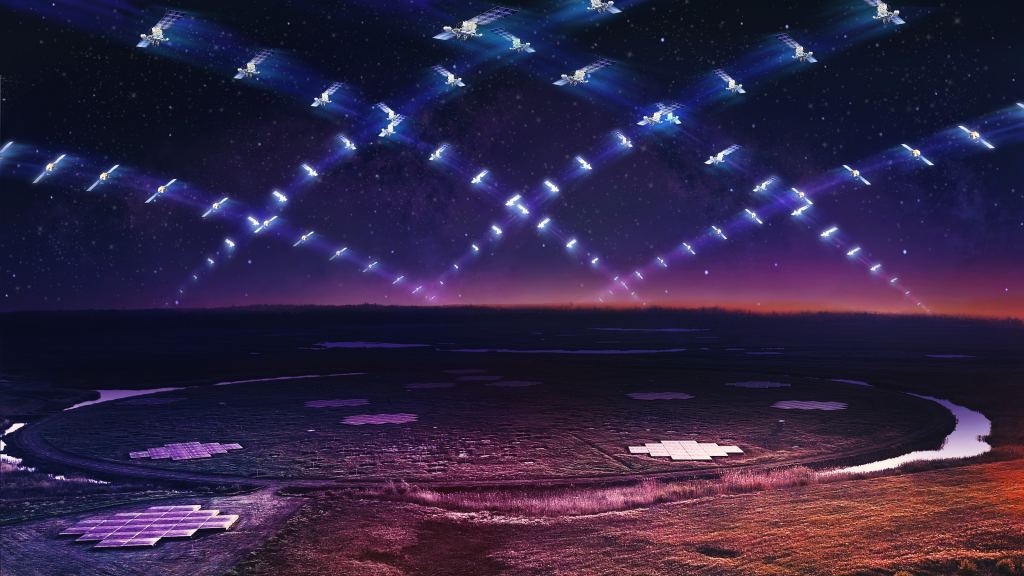Second Generation Starlinks are 32 Times Brighter in Radio Wavelengths
By Mark Thompson
Global internet access does seem like a worthy enterprise yet the rise of satellite megaconstellations there is a danger of the night sky becoming ruined. Astronomers the world over are keeping an eye on the impact these satellites are having on the night sky. Until recently the concerns have been relating to the reflection of visible light against the sky hindering night time observations. A recent study shows that the second-generation Starlink satellites leak 32 times the radio signal than the previous models. Are their presence putting at risk the radio sky now too?
The starlink satellites are the brainchild of SpaceX to provide high-speed broadband internet to every corner of the planet. The constellation of satellites consists of thousands of small satellites measuring just 2.8 metre in length. They form a network that can transmit data quickly around the planet offering high speed internet which is far more reliable than traditional satellite systems. The goal is to provide high speed connectivity to places where fibre or traditional infrastructure is difficult or too costly. As it expands though there will be more and more satellites in orbit.

It’s not just SpaceX that is causing the problem though. Since 2019 other companies have been getting in on the act with organisations like OneWeb too having launched hundreds of thousands of satellites. The plan is for organisations like these to launch in excess of 100,000 satellites. If the rise in megaconstellations like these rise then the emissions (visible, radio or otherwise) could very easily make astronomical observations from the surface of Earth difficult if not impossible.
During the last year, observations with the Low Frequency Array (LOFAR) revealed that the Starlink satellites were emitting radio waves. Astronomers were concerned that the unintentional waves could have a negative impact on radio observations. As SpaceX expand their network with a second generation of satellites, their ‘V2-mini’ modules the risks seem to be increasing. New LOFAR observations have shown that the new satellites are producing up to 32 times more radio emissions than the earlier satellites! Anyone observing the universe in radio waves at the time of their passing is likely to receive a blinding radio signal that would ruin any observations.

Putting the radio emissions into context, the new satellites are emitting radio waves 10 million times brighter than that detected by the faintest astronomical object detected by LOFAR so far! The discovery highlights the need for control and regulations around satellites and their emissions, intended or otherwise. Left unchecked then the future of astronomical observations will be highly compromised.
ASTRON operates LOFAR which is one of the most sensitive low frequency telescopes in the world. It’s only possible because it operates from the Netherlands which is one of the most densely populated countries in Europe. Despite the high population density, the national organisations of Netherlands co-operate and consult with ASTRON to safeguard the future of radio astronomy. We just need other organisations like SpaceX and OneWeb to jump on board to ensure our view of the universe isn’t lost for ever.
The post Second Generation Starlinks are 32 Times Brighter in Radio Wavelengths appeared first on Universe Today.

September 21, 2024 at 04:33AM
via Universe Today read more...

Post a Comment